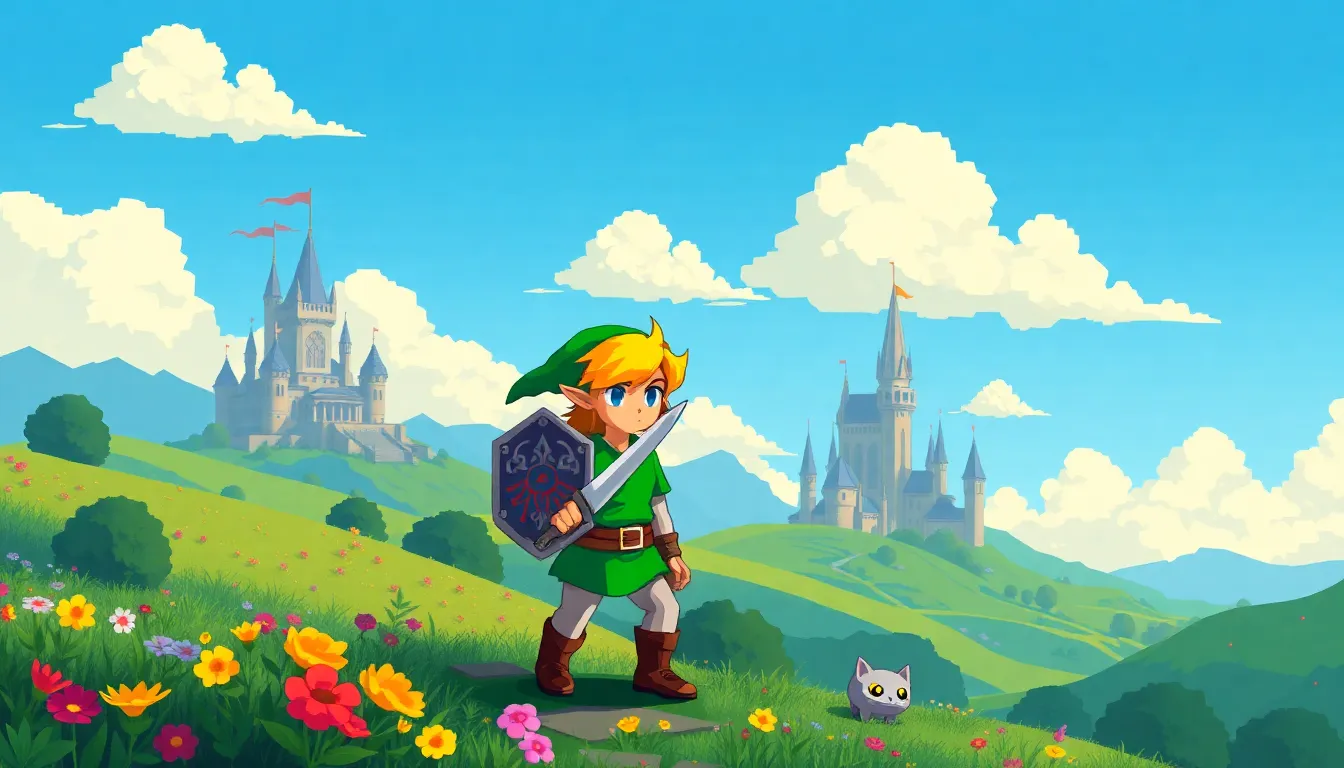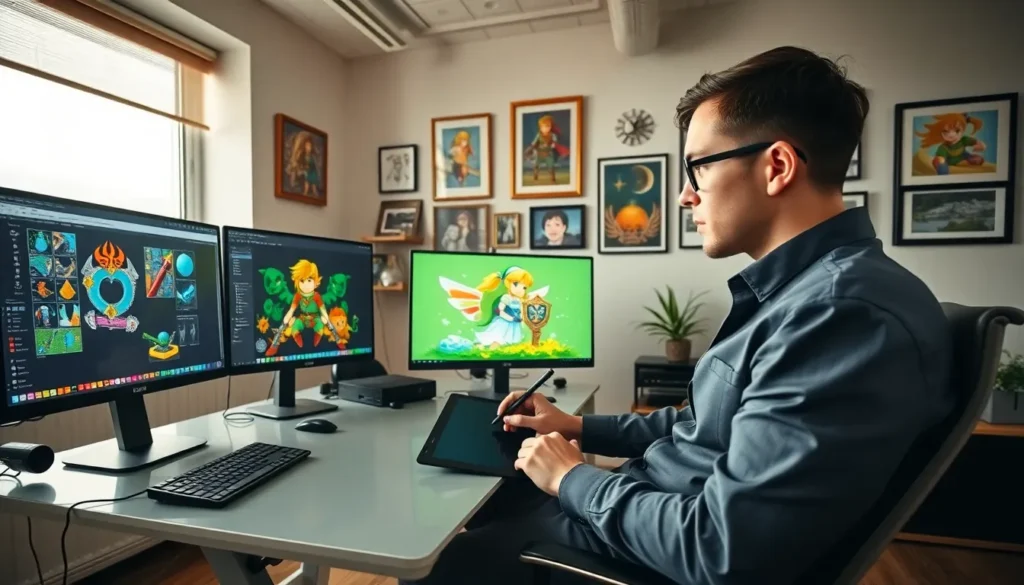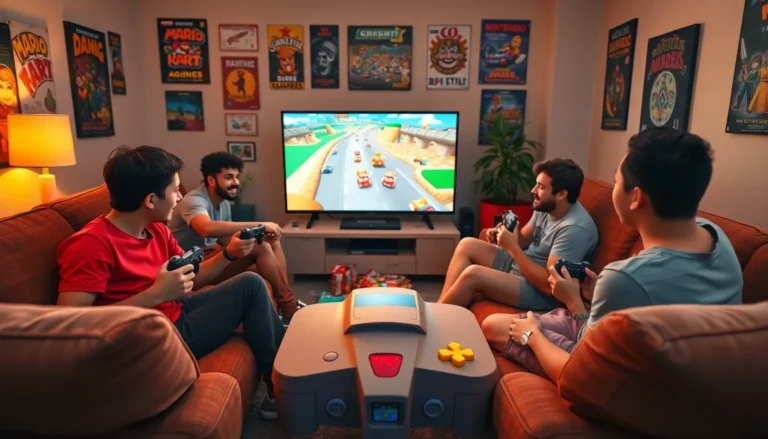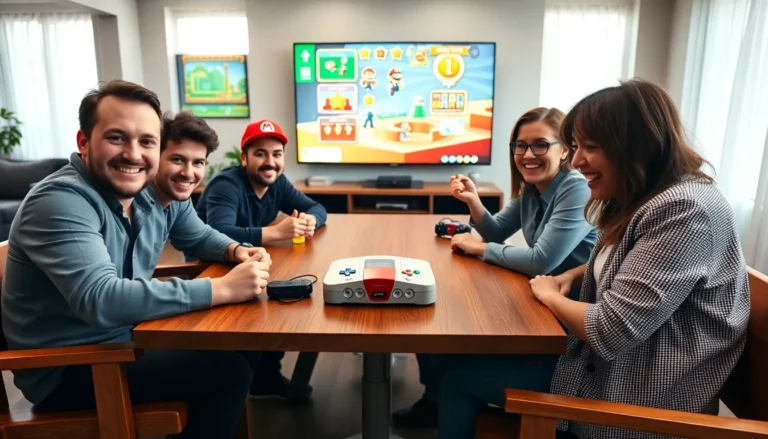The world of pixel art is like a treasure chest, filled with nostalgia and creativity, especially when it comes to the iconic franchise of Zelda. Let’s face it, whether you’re a seasoned artist, an enthusiastic gamer, or someone who simply appreciates good art, pixel art versions of Zelda evoke memories from childhood, those late nights spent in a quest to rescue Princess Zelda, armed with nothing but your wits and a trusty sword. In this text, we’ll embark on an adventure through the pixelated landscapes of the Zelda universe, exploring its rich history, iconic characters, and tips for creating your very own masterpieces. So grab your pixel brush and let’s immerse.
Table of Contents
ToggleThe History Of Zelda Pixel Art

Evolution Of Graphics In Zelda Games
From the moment the first Zelda game graced our screens in 1986, its graphics have told a story as intricate as Link’s quests. The game started off with a top-down perspective and simple sprites, which, while charming, were limited by the technological constraints of the time. But, as consoles evolved, so did the artistry.
With the transition to 16-bit graphics in The Legend of Zelda: A Link to the Past, the game showcased lush landscapes and more detailed characters. This leap significantly impacted the pixel art community, inspiring artists to replicate those enhanced visuals in unique ways, capturing the enchanting essence of Zelda. Today, pixel art remains a testament to the series’ enduring charm, even as modern graphics continue to push boundaries.
Influence Of 8-Bit And 16-Bit Art Styles
Zelda’s pixel art is heavily influenced by the 8-bit and 16-bit art styles that defined an era. These early graphics, characterized by limited colors and reduced resolution, sparked innovation among artists eager to create detailed worlds and characters within those constraints. The blocky nature of 8-bit art allowed for creative character designs and expressive environments, while the 16-bit era introduced more intricate details and smoother animations.
As Zelda progressed, these styles laid the groundwork for both nostalgia and modern artistry: hence, many contemporary pixel artists draw inspiration from these iconic visuals, breathing new life into classic designs and bringing pixelated adventures to new generations.
Iconic Zelda Characters In Pixel Art
Link’s Various Designs Through The Ages
Link’s evolution reflects the journey of the Zelda franchise itself. Initially depicted with a simplistic, tunic-wearing sprite, each new installment introduced variations based on the game’s thematic elements. Iconic looks from the Ocarina of Time to the cel-shaded Wind Waker signify more than just fashion changes. Through pixel art, artists reimagine these styles, often merging their favorite features into one harmonious design.
Imagining Link’s expressions, poses, and bold colors through pixel art adds a fresh dynamic to the beloved character. Artists often explore varying interpretations, embodying his unwavering spirit across different game styles, be it in stylized minimalism or vibrant detail.
Princess Zelda: A Visual Journey
Princess Zelda, arguably one of the most iconic characters in gaming history, has been reimagined countless times in pixel art forms. From the regal princess in the original game to the powerful iterations seen in Breath of the Wild, her character offers a plethora of inspiration.
Artists studies often investigate into her evolving costumes, royal symbols, and signature powers. Each pixel evokes a strong sense of her character, whether she is displayed as a serene ruler or a warrior Princess. Through pixel art, the multi-faceted nature of her character becomes a canvas for endless creativity.
Creating Zelda Pixel Art
Essential Tools For Pixel Artists
For aspiring pixel artists, equipping oneself with the right tools is the first step in crafting stunning artwork. Software like Aseprite, Photoshop, or even free tools such as GIMP opens the door to a world of pixel artistry. Each program provides unique features tailored for different skill levels, aiding artists in manipulating pixels with precision.
Complementing software, having a tablet or a good old mouse is critical for developing smooth lines and intricate designs. Alongside traditional art supplies like graph paper for sketching ideas, these tools provide the foundation for creating pixel perfection.
Techniques To Capture The Essence Of Zelda
Creating pixel art that accurately captures the soul of Zelda requires practice and passion. One great technique is to study sprites from original games to understand how artists communicated depth and character within limited pixels.
Also, using palettes inspired by the games ensures your art reflects the distinct aesthetic of Zelda. Experimenting with shading techniques and outlines plays a pivotal role in bringing characters and settings to life, solid outlines create a classic effect, while softer edges display a more modern trend. Remember, practice makes perfect, so don’t hesitate to create your own unique versions and styles.
Showcasing Your Work: Communities And Platforms
Popular Online Galleries And Forums
Once a piece of pixel art is complete, the next challenge is showing it off to the world. Online communities like DeviantArt, ArtStation, and even specialized forums such as PixelJoint provide platforms for artists to share and receive feedback. These spaces are not just for showcasing: they’re also valuable for networking with fellow artists and finding inspiration.
Many of these platforms host themed challenges or collaborative projects that can help further an artist’s skills and visibility. Many pixel artists have found their audience through these communities, earning recognition and even commission opportunities.
Participating In Pixel Art Contests
Joining pixel art contests is a fantastic way to sharpen one’s skills and get involved in the broader artistic community. Websites like zeldadungeon.net often launch themed contests around Zelda lore, encouraging artists to create pieces that showcase their talent while connecting with other fans.
Contests typically offer prizes, but the real reward is the experience gained through deciphering themes and refining techniques. Participating helps to foster creativity and build confidence as artists share their work and receive constructive criticism.



